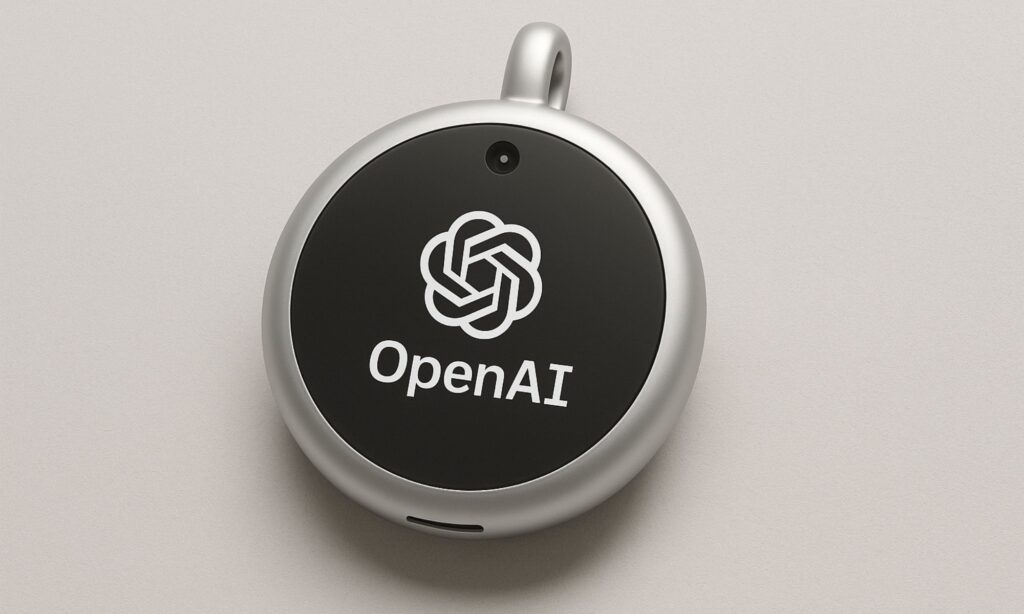What do you get when Apple’s design legend and OpenAI’s visionary team up? Whatever it is, it’s not a phone—and it might just replace it.
“People who are really serious about software should make their own hardware,” Alan Kay says. OpenAI CEO Sam Altman and ex-Apple designer Jony Ive totally agree. Altman even backed Humane AI Pin, but that didn’t work out. The product tanked, and the company shut down. That experience might give Altman some perspective as he joins forces with Ive to build an OpenAI device as important as a laptop or a phone.
This new project marks OpenAI’s biggest acquisition yet. Ive is coming in with his crew of about 55 engineers and researchers. His studio, LoveFrom, will take the lead on creative and design work across OpenAI and focus on building hardware that makes tech feel more natural to use.
Altman and Ive aren’t thinking small—they want to move past the smartphone era, which has ruled since the first iPhone in 2007. If their idea takes off, it could kickstart a new wave of tech called “ambient computing.”
OpenAI device development in a nutshell

In an interview, Ive and Altman keep quiet about what their new AI gadget might look like or how it’ll work. They say more info is coming next year. But according to The Wall Street Journal, Altman showed his team a sneak peek of the thing on Wednesday. And just like that, the leaks are already starting.
This device is meant to know everything going on around you and in your day-to-day. It won’t get in the way, either—it’s something you can carry in your pocket or set on your desk. Think of it as the third piece next to your MacBook Pro and iPhone.
Reports claim it won’t be a phone, and the goal seems to be pulling people away from screens. Altman says it’s not glasses, and Ive doesn’t seem too into the idea of wearing something on your body. Still, analyst Ming-Chi Kuo thinks one possible use is wearing it around your neck.
My prediction

I’m starting to think it might be an AI-powered pendant. Something that stays on throughout the day, picks up on your habits, and connects with your phone or laptop with no hassle.
I picture a voice assistant with a mic, speaker, camera, and motion sensors. Maybe it even includes a tiny projector that beams text or visuals onto your hand. If you’re chatting with someone in a different language, it can handle back-and-forth translation right on the spot. Plenty of those features made it into the Humane AI Pin, which ended up being a major letdown. So why do I believe OpenAI and Ivy might explore that direction?
In a conversation with Bloomberg, Ive described the Humane AI Pin and Rabbit r1 as “very poor products.” He pointed out the lack of fresh thinking in today’s product designs. I can understand his point. The laser display on the AI Pin drained a huge amount of power, which led to overheating. But with companies like Apple working on AI-powered battery management, I won’t be surprised if OpenAI finds a way to fit a powerful battery into a clean, compact design.
Release date
Looks like OpenAI timed its Jony Ive news to steal some of the spotlight from Google I/O. That event just wrapped and leaned into Google’s strengths—tight ecosystem, strong AI features, all that. OpenAI can’t compete there right now, so changing the conversation makes sense.
As for the upcoming device, Ming-Chi Kuo thinks it’s heading into mass production by 2027. If you’ve kept up with novel product launches, you know they don’t exactly move fast. The Vision Pro, for instance, spent 17 years in development before coming out. So yeah, I wouldn’t be surprised if OpenAI goes slow with this one too.
OpenAI device: Final thoughts
The mix of Ive’s design chops and Altman’s vision feels like a wild card with real potential. Sure, it might take a while, but I’d rather wait for something that works than rush into another flop. Fingers crossed this thing doesn’t end up as another expensive desk toy.
